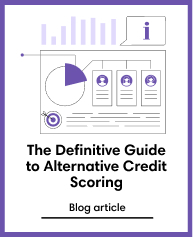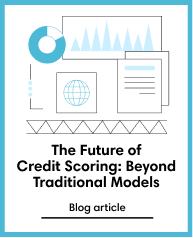Credit Scoring
Jul 2, 2021
New credit scoring models based on machine learning | Credolab
Subscribe to our newsletter
One of the key backbones of new credit scoring methods used by Fintech companies is alternative data. This information comes from different data sources, such as bank transactions, cell phones, and real estate transactions. Given these new sources of information, alternative data requires specific technologies for its correct processing and to thus identify credit risks and obtain more accurate credit profiles.
Today it would be unthinkable to analyze alternative information manually due to the costs in time and resources and the probability of human error. Thus, machine learning and artificial intelligence inevitably play a fundamental role when working with new credit scoring methods.
What is machine learning?
Machine learning is a branch of artificial intelligence that allows machines to learn without the need for programming. In other words, coding instructions for specific tasks is not necessary anymore since machines can interpret the information and perform tasks independently. Machine learning identifies patterns and makes predictions under different circumstances.
Unlike linear prediction models, machine learning allows for better and more accurate insights. These improvements are vital to the development of credit scoring methods. Some of its advantages include:
- The ability to identify and extract important and useful data within a sizable data set.
- The capacity to disclose the degree of customer solvency in relation to the information collected
- The recognition of key patterns of consumer behaviour in different circumstances
- The reduction of the risk of bad debts by knowing beforehand the customer's ability to pay on time.
Consequently, alternative credit scoring models differ from the traditional ones in two ways. The first is that technology enables financial intermediaries to collect and use more information. The second is the adoption of machine learning techniques that - in contrast to traditional models - allow the extraction of non-linear information from different variables, improving the model's predictive power.
The process towards financial inclusion
Hand in hand with machine learning and artificial intelligence, these new risk prediction models provide Fintech companies with the confidence to include a new range of reliable clients, although currently excluded from the financial system. At Credolab, we are committed to making credit available to worthy but overlooked people through our embedded credit scoring that uses alternative data. By giving businesses access to an untapped, highly predictive source of behavioural data, we make better credit scoring decisions and help include a whole new range of clients.
As time goes by, it is estimated that the demand for non-conventional credit will grow since new generations have an increasingly digital lifestyle and way of consumption. Therefore, access to alternative data and machine learning will become essential to reach these new audiences more precisely.
Taking into account the pace of technological advancements, the introduction of new credit scoring methods based on alternative data and machine learning is not only logical but foreseen. The use of artificial intelligence to improve credit scoring models is in its early stages; new challenges and opportunities remain to be discovered. Nevertheless, a promising future is expected.





